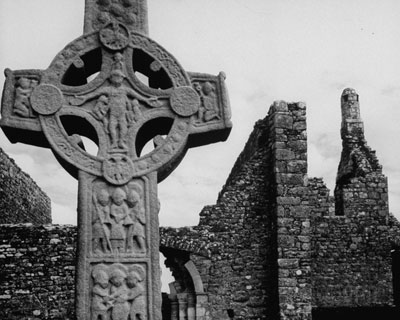The following is one of many entries from the Phantoms Fill The Southern Skies book. I am producing it here from the original manuscript file for visitors to sample and see if they would be interested in the full text available on Amazon.
Please respect the copyright owners – Jeff Lawhead, J.S. Lawhead and 23 House Publishing – and do not reprint or reproduce any portion of this text on any monetized formats and without permission. Reproduction for hobbyist or academic interest (as well as “fair use”) is ok as long as sources are explicitly cited. Contact me at Meteo.Xavier@gmail.com for any permission inquiries regarding this or any other excerpt.

“Be careful what you wish for” is a lesson imparted through many types of fables throughout the world. It tries to teach us that cheating to overcome an obstacle (in this case, using magic to bend nature to your fortune) is never worth the effort, and the payment for doing so outweighs the reward in the end. We see this in stories featuring wish-granting genies, adaptations or variations of the famous W.W. Jacobs short story, “The Monkey’s Paw”, and, more often than not, witches that an ordinary person has set out to consult for an extraordinary problem. One major reason the witch is often associated with evil intent is that asking one for a favor is akin to making a deal with the devil. She will help you and get the job done, but she chooses the method and will not be held responsible for the outcome. Other times, the witch is actually just a kindly old soul and doesn’t need to be anything more than helpful, as we saw with the “conjure woman” in Creatures of the Night.
In Fannin County, Georgia, there is a classic example of the former with a story dating back to mid-1940s. Miss Parry was the name of the local frump that lived in a paper-thin shack up on the hill. Locals called her that because no one knew her first name and likely didn’t have the courage to ask her what it was. No one knew anything about her other than she was exceptionally old and mysterious, and yet it was still said that many came seeking her spells and solutions.
One of them was a woman who lived in Gilmer County by the name of Marge who was the self-proclaimed head of her family. She was a bullish woman, heavily opinionated and given to steamrolling her way through the affairs of the family. She had a niece named Lily who was growing up and came to find the man of her dreams with a local moonshiner named Grady Holmes. Grady was a decent enough man, but his business in unlicensed alcohol did not sit well with Lily’s proper, Christian family (I wonder if this story inspired The Cutter Legend, or vice versa). Like so many Southern families at the time, they held so high a standard for who their children should marry that they wanted to make sure Lily never saw Grady Holmes again. They came to call on Aunt Marge, and she, in turn, came to call on old Miss Parry.
Both Marge and her sister, Lily’s mother Hilda, hiked the road to where Miss Parry was said to be and, sure enough, they were greeted by a strange little woman who looked as frail as the tiny stick house she was living in. Marge and Hilda asked Miss Parry if there was anything she could do to stop Lily from wanting to marry Grady and, turning her attention away from the two busybodies, began mixing some ingredients together in a pot, mumbled something that sounded like a spell, and then told them Grady will not be a problem anymore.
Thinking she must’ve meant that Lily would no longer be interested in seeing the lowbrow shiner-rat, they went back about their business, only to find out Lily had still gone down to the meeting place they spent most evenings and he had not shown up. The next day, as Marge and Hilda were shopping, they learned in an unceremonious fashion that Grady had died in a car crash – he lost control of his truck as he was carrying a shipment of moonshine and collided head on with a tree. The engine exploded and the intensity of the fire inside was fed by the alcohol in the car until the authorities had to remove a charred corpse from the wreckage. As it happened shortly after Marge and Hilda had left the hillside shack, there was little doubt now that Miss Parry was a genuine black magic witch.
The second story comes from Dahlonega of Lumpkin County in North Georgia, a city famous for its roots with the Creek and Cherokee Native Americans and as the site of the first major gold rush in the United States back in 1828. Nowadays, the Dahlonega is better known as the “wine capital of Georgia”, and as the site of a strange rock pile that acts as both a historical marker for the forest and the grave-site of a Cherokee princess named Trahlyta.
The tragedy of Trahlyta is another story of love gone wrong, and where she is buried now is not far from where she lived in life. Not much seems to be known of her early years, other than she was Cherokee royalty and she was renowned for her ageless beauty. It was said that she consulted with someone the legend states was the Witch of Cedar Mountain, who guided her to the site of a fountain of youth, now known as Porter Springs, that was blessed by the Great Spirit. The water had the power to temporarily stop the aging process in her body and she needed to drink the water periodically to maintain its power, otherwise she would grow old and die all the same.
She did as she was told and won the affections of the men of the tribe, and none more so than a warrior named Wahsega, who eventually asked for her hand in marriage. Trahlyta rejected his proposal and Wahsega did not take it well – he kidnapped her shortly afterwards and fled Georgia for a land much further away where the tribe could not take her back. Wahsega kept his now trophy wife almost a prisoner, and her beauty and life did not last too long without the powers of the fountain. She wasted away and when she came near to her death, instead of begging to be released, she asked Wahsega for one final wish – to bury her back in her homeland when she died under a pile of stones, so whoever puts another stone on the pile will be granted good fortune. Some legends even tell that she cried tears of gold in her last day; probably as a strange side effect of the water’s power latent in her body.
She died not long after making this plea and Wahsega, likely now seeing the error of his ways, went back to Cedar Mountain and buried her where she lies today underneath a stone pile now some six feet in height.
But the story doesn’t end there – it was then said that the Witch of Cedar Mountain, who apparently had taken a shine to Trahlyta, was heartbroken over her kidnapping and death and added a curse onto the stone pile so that whoever removes a stone does so at the risk of their lives. It is said that there were two attempts, in much later years, by two road construction companies that tried to move the stone pile so they could get work done and, like the story of Miss Parry, both met with vehicular fatality not long after carrying the stones. Now the stones are set to remain where they are today and the site is recognized by the Georgia Historic Commission.
Both stories offer interesting similarities and reversals for the traditional Southern role of the witch, and even if the Witch of Cedar Mountain could be seen as far more good-hearted than most examples, it doesn’t escape the fact that what Trahlyta wished for still eventually brought on her sad demise. For those who believe in the power of witchcraft, there has been a constant, age-old warning that you can’t play with the forces of nature and expect to go unpunished. We are not normally given these powers for a reason, and those who know this reason often find out much too late…

Images used in this post do not belong to me or 23 House and are not part of the original manuscript. They were pulled from Google Images or Snappy Goat and only serve as graphical decoration. They are not being used for any monetizing purposes whatsoever.